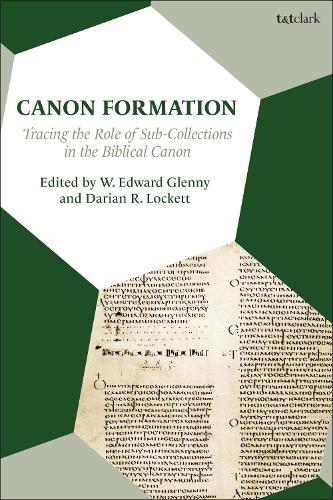
Canon Formation: Tracing the Role of Sub-Collections in the Biblical Canon
(Paperback)
Available Formats
Publishing Details
Canon Formation: Tracing the Role of Sub-Collections in the Biblical Canon
By (Author) Professor W. Edward Glenny
Edited by Associate Professor Darian Lockett
Bloomsbury Publishing PLC
T.& T.Clark Ltd
22nd August 2024
United Kingdom
Classifications
Tertiary Education
Non Fiction
Judaism: sacred texts and revered writings
Criticism and exegesis of sacred texts
220.12
Physical Properties
Paperback
368
Width 156mm, Height 234mm
Description
Contributors to this volume examine the various collections of canonical sub-units in the canon, considering the state of the question regarding each particular collection. The chapters introduce the issues involved in sub-collections being accepted in the canon, summarize the historical evidence of the acceptance of these collections, and discuss the compositional evidence of canonical consciousness in the various collections. The contributors consider paratextual evidence, for example, the arrangement of the books in various manuscripts, the titles of the books, and also include evidence such as the presence of catchwords, framing devices, and themes. The book begins with a consideration of the two overarching collections the Old and New Testaments. Next, several sub-collections within the Hebrew Bible (OT) are considered, including the Torah, Prophets, the Megilloth, the Twelve (both in their Masoretic Text and Septuagint forms), and the Psalter. In addition, sub-collections in the New Testament include the four-fold Gospel, the Pauline Collection (usually with Hebrews in the early manuscripts), the function of Acts within the New Testament, the Praxapostolos (Acts along with the Catholic Epistles), and the function of Revelation as the end of the canon.
Reviews
The focus on sub-units of the biblical books in this volume is a most welcome focus that has not received adequate attention by earlier scholars or in my work on canon formation. This volume provides an important advance on canon formation in this often neglected area. * From the foreword by Lee Martin McDonald, Acadia Divinity School, Canada *
For years now, the scholarly interest in the biblical canon has only seemed to grow. But lacking in many of these discussions has been a deep exploration of the form and structure of the canon, with special attention to canonical sub-units. This new volume gathers together an impressive group of scholars who provide well-researched and even-handed essays that fill this important gap. I highly recommend it. * Michael J. Kruger, Reformed Theological Seminary, USA *
Author Bio
Darian R. Lockett is Associate Professor of New Testament at Talbot School of Theology, Biola University, USA. W. Edward Glenny is Professor of New Testament Studies and Greek at University of Northwestern St. Paul, USA.
